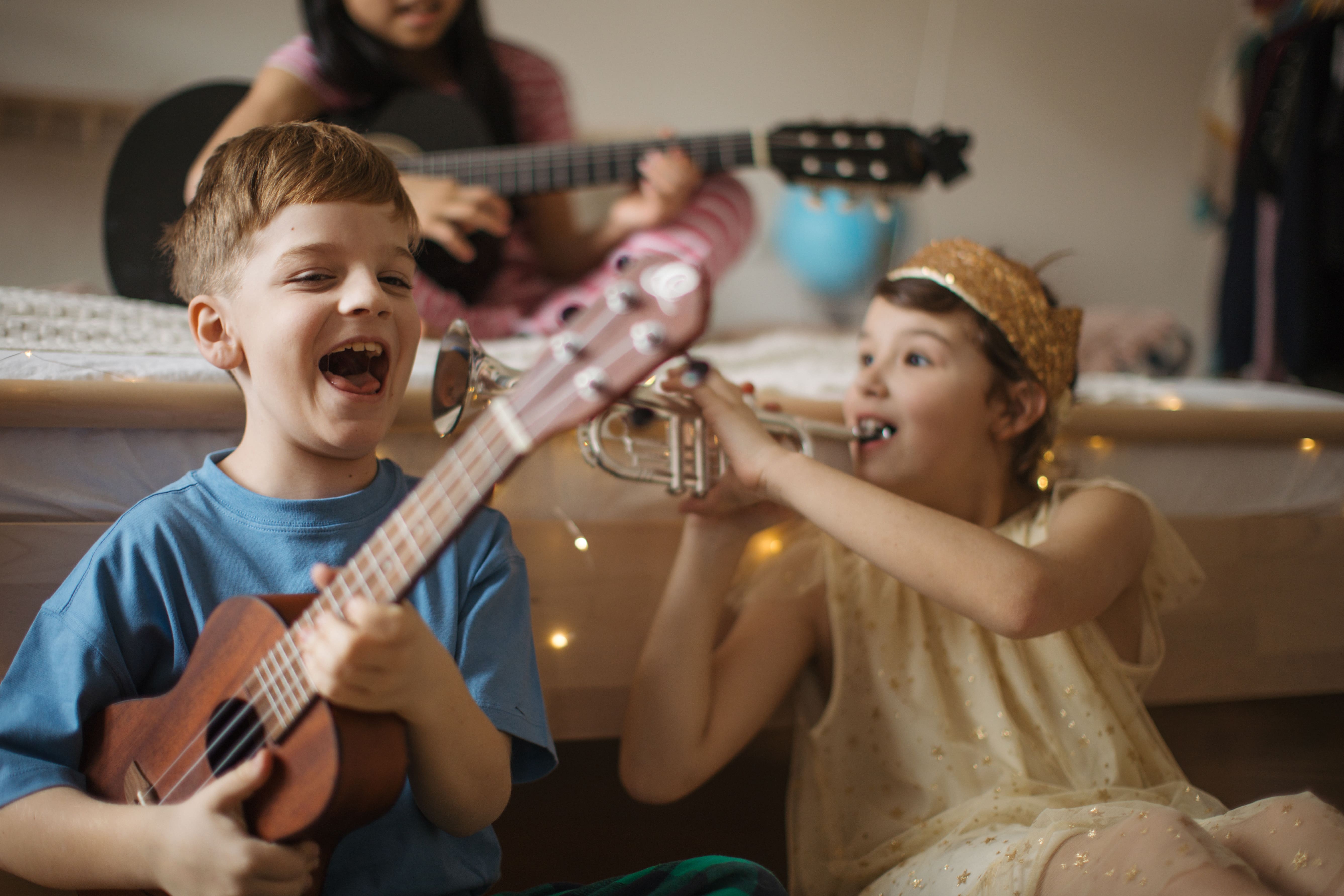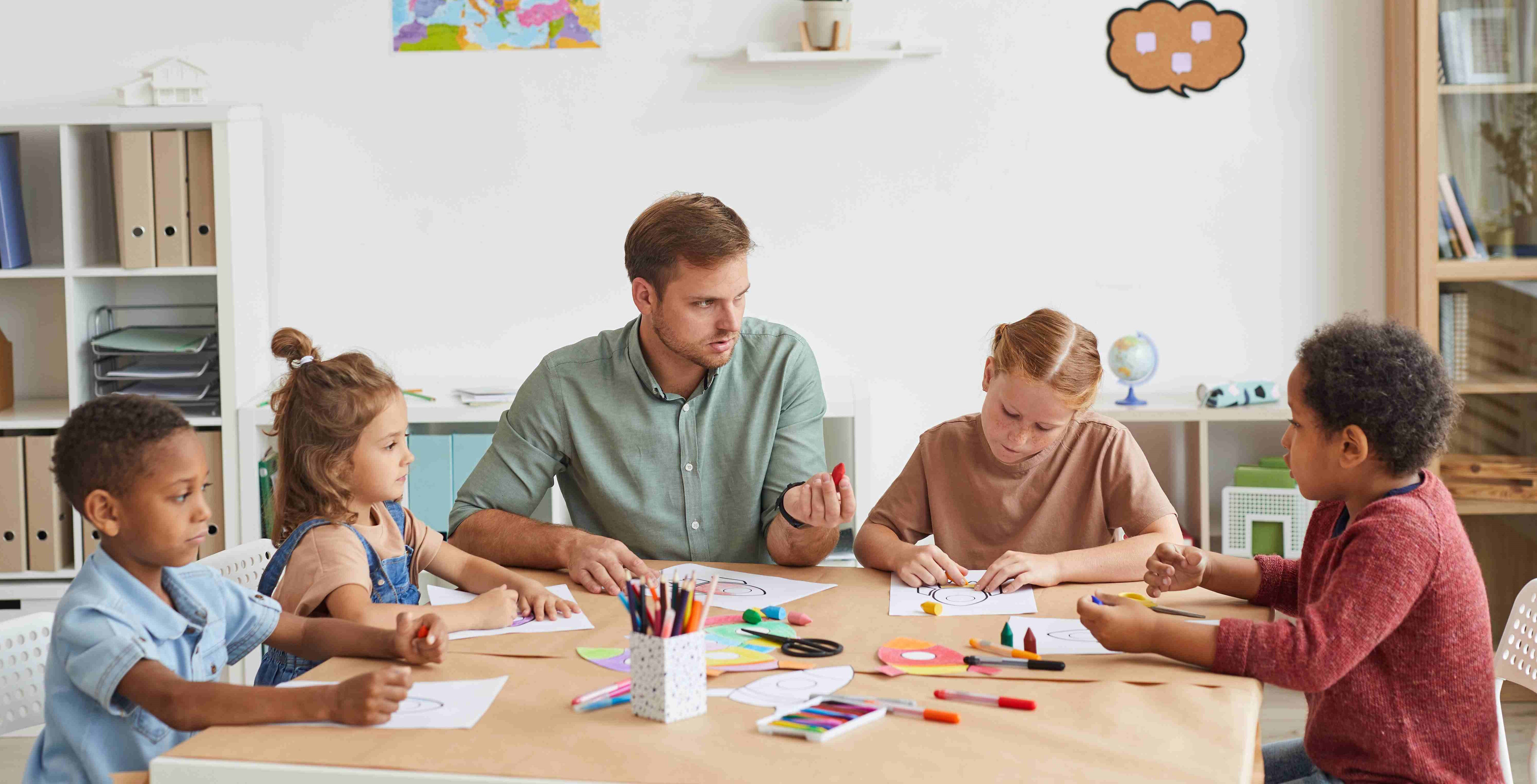Celebrate International Music Day with 7 fun at-home activities that spark children's creativity, boost skills, and turn everyday moments into music.
October 1 marks International Music Day, a celebration of how music connects people across ages and cultures. Music doesn’t have to be limited to lessons or instruments, it can live in the kitchen, the living room, and even in your backyard.
Children naturally respond to rhythm, melody, and sound. A simple beat can get them clapping along, a playful tune can turn into a dance, and even ordinary objects at home can become instruments. These experiences are fun and also help to support sensory development, strengthen motor skills, and encourage creativity. With a little imagination, everyday routines can turn into joyful music-making moments. Here are 7 creative activities to try together at home.
1. Kitchen Band Jam
The kitchen is often the heart of the home, and on International Music Day, it can double as a stage. Pull out pots, pans, wooden spoons, or sealed jars. Invite children to tap, bang, or scrape, and notice how each object makes a different sound.
To take it further, create a family rhythm circle, one person sets a beat, and everyone else follows along. Try layering different sounds like light tapping, heavy banging, or scraping to make your own “kitchen band.”
How it benefits: This type of sensory play helps children develop auditory discrimination (hearing differences in sound), improves hand-eye coordination, encourages teamwork, and gives them the joy of experimenting without strict rules.
2. Homemade Shakers and Drums
Instead of buying instruments, make them together. Collect empty jars or bottles and fill them with everyday items like buttons, beads, bottle caps, small pebbles, or paper clips. Each filler creates a unique sound when shaken. Let children decorate the outside with stickers, tape, or markers so the instrument feels personal.
For drums, reuse cardboard boxes, buckets, or coffee tins. Stretch a balloon or piece of fabric over the top for a different tone.
How it benefits: Crafting the instruments adds a creative art element, while using them builds fine motor skills, rhythm, and a sense of pride in making something from scratch.
3. Freeze Dance Party
Sometimes the simplest activities bring the most laughter. Clear some space, play upbeat songs, and let everyone dance freely. Pause the music suddenly, and everyone has to freeze in place until it starts again.
Vary the type of music from slow, fast, classical, to silly tunes, to show how movement changes with rhythm.
How it benefits: Freeze dance builds listening skills, self-control, and body awareness. It also gives children a safe outlet to release energy and connect with family members through movement.
4. Sound Sorting Game
Gather a basket of everyday objects like keys, bells, paper, spoons, or toy cars. Invite children to explore how each one sounds. “Is it loud or quiet? High or low? Short or long?” Once they’ve explored, sort the sounds into groups together.
You can make it into a guessing game by hiding an object behind your back and letting children identify it by sound alone.
How it benefits: This strengthens auditory memory and attention to detail, skills that support language development, problem-solving, and focus.
5. Use Your Body as an Instrument
Our bodies are built for music. Clap hands, snap fingers, stomp feet, pat knees, or tap your shoulders. Start with simple patterns and let children echo them back. Switch roles and encourage them to lead a rhythm for the family to follow.
How it benefits: Body percussion develops rhythm, timing, and memory. It also fosters confidence, as children see that they can create music without any tools at all.
6. Nature’s Music Walk
Head outside for a short walk and listen carefully. Birds chirping, wind rustling, footsteps crunching leaves, these natural sounds are a symphony waiting to be noticed. Encourage children to point out what they hear, then try imitating the sounds back at home with voices or instruments.
To make it more interactive, record the sounds on a phone and replay them later as a family “sound quiz.”
How it benefits: This activity encourages mindfulness and teaches children to appreciate sound in their environment. It also blends sensory awareness with creativity, helping them make connections between nature and music.
7. Light & Shadow Music Show
Dim the lights, grab a flashlight or lamp, and use your hands, toys, or cut-out shapes to make shadows on the wall. Play music in the background and let children move the shadows to match the beat like slow and flowing for gentle songs, quick and bouncy for upbeat ones. Families can even create a little “shadow concert” together.
How it benefits: This combines music with visual play, sparking creativity and strengthening coordination. It also helps children explore rhythm through movement in a brand-new, imaginative way.
Final Thoughts
Music has a way of bringing people together, and International Music Day is a wonderful reason to let it fill your home. From banging pots in the kitchen to dancing in the living room or listening closely to the sounds outside, these small activities create lasting memories.
For children, music is more than entertainment, it’s a way to explore their senses, build coordination, and discover new ways to express themselves. For families, it’s a chance to slow down, laugh, and enjoy being present with each other.
So, turn up the music in whatever form it takes like clapping hands, stomping feet, or a pot and spoon orchestra. The goal isn’t perfection, it’s connection ,and that’s something worth celebrating.
Stay in the know and check us out on social media! Follow BrightPath on Facebook and Instagram for a variety of fun activities and daily inspiration.







